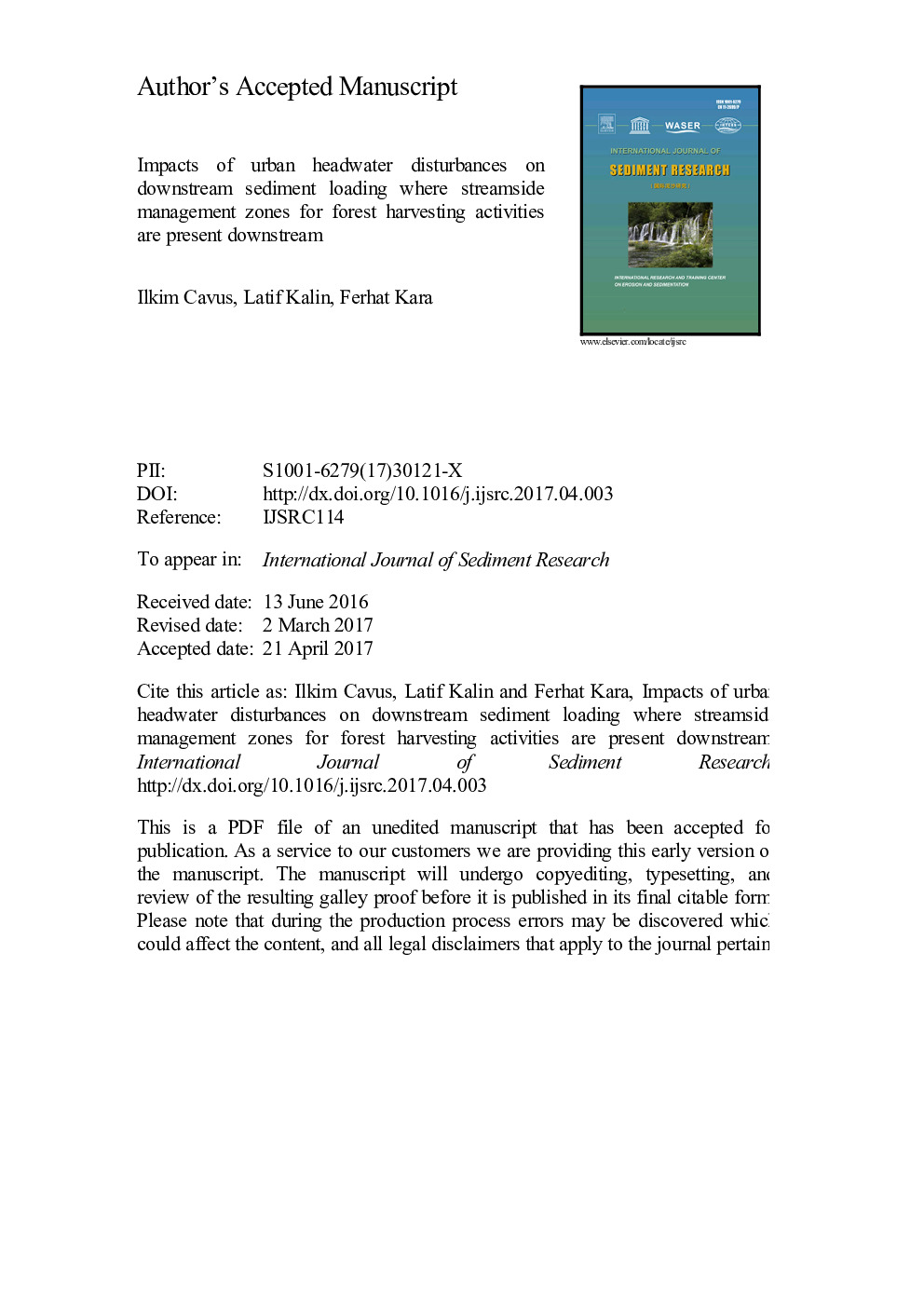| Article ID | Journal | Published Year | Pages | File Type |
|---|---|---|---|---|
| 8911137 | International Journal of Sediment Research | 2017 | 32 Pages |
Abstract
Watershed disturbances caused by land use/land cover (LU/LC) change, intensive forestry practices, and other forms of watershed disturbance are known to negatively affect water quality, if best management practices (BMPs) are not present. Disturbances near or around headwaters where BMPs are absent or are inadequate may impact downstream water quality and stream ecology regardless of the presence of downstream BMPs. In this study, the recovery of two small forest-dominated watersheds (WW and EW) in Auburn, Alabama, USA, was monitored 6-years after a partial clearcut was done. The streamside management zone (SMZ) in WW was also partially harvested shortly after the partial clearcut to improve its sediment trapping effectiveness over the long-term. The hydrology and sediment transport in these watersheds were expected to stabilize over this period, however, new disturbances in the headwaters of both watersheds changed the watershed dynamics. Streamflow and sediment load were examined over a 15-month period from February 2014 to May 2015. The clearcut in WW and EW, and the partially harvested SMZ in WW seemed to have recovered; however, substantial amount of sediment load were measured across all monitoring sites in both watersheds as a result of upstream disturbances. This study emphasizes the necessity of watershed management as a whole, and the importance of BMP applications within the entire watershed. It also highlights the fact that watershed management and BMP implementation is a dynamic process, thus, strategies and techniques need to be continuously adapted in response to environmental changes.
Related Topics
Physical Sciences and Engineering
Earth and Planetary Sciences
Geochemistry and Petrology
Authors
Ilkim Cavus, Latif Kalin, Ferhat Kara,
